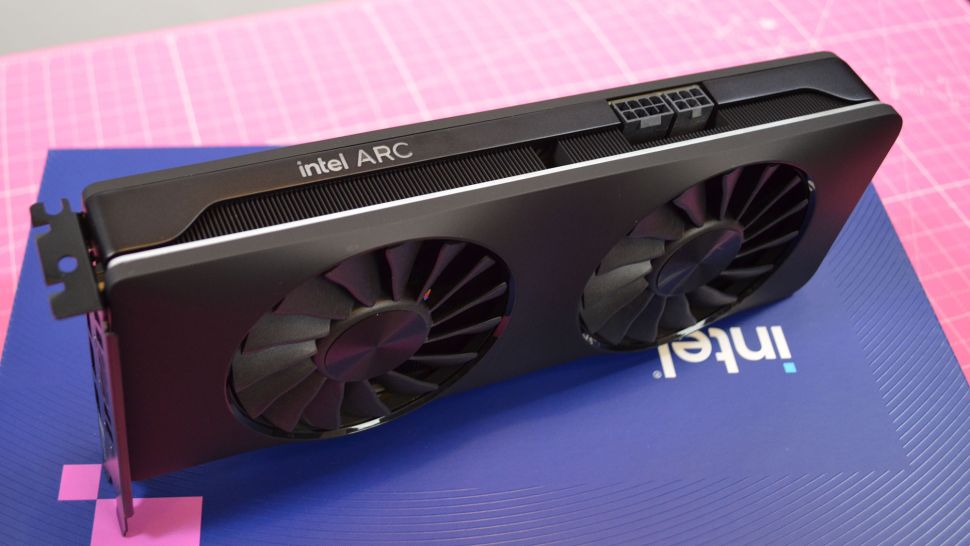Intel Arc A750 review: a great budget graphics card with major caveats
The Intel Arc A750 is probably the one graphics card I’ve most wanted to get my hands on this year, and now that I’ve put it through a fairly rigorous testing regime, I can honestly say I am very impressed with Intel’s first effort at a discrete GPU. At the same time, it’s also not an easy card to recommend right now, which is a tragedy.

First, to the good, namely the great price and stylish look of the Intel Limited Edition reference card. The Intel Arc A750 Limited Edition card has an MSRP of just $249.99 (about £200 / AU$375), and the limited number of third-party cards out there are retailing at roughly the same price.
The Arc A750 I tested also looks spectacular compared to the reference cards from Nvidia and AMD, thanks to its matte black look, subtle lighting, and silver trim along the edge of the card. It will look great in a case, especially for those who don’t need their PCs to look like a carnival.
When it comes to performance, I was most surprised by how the Arc A750 handled modern AAA games like Cyberpunk 2077 and Returnal, both of which put a lot of demands on a graphics card in order to maintain a stable frame rate. The Arc A750 handled them much better than the RTX 3050 it is ostensibly competing against. It even outperformed the RTX 3060 in many cases, putting it just under halfway between the RTX 3060 and the RTX 3060 Ti, two of the best graphics cards ever made.
The thing about the Arc A750 is that the things it does well, it does really well, but those areas where it flounders, like older DirectX9 and DirectX10 workloads, it does so pretty badly.
It’s a tale of two halves, really. Nothing exposes the issues with the Arc A750 more than its synthetic performance scores, which on average trounce the RTX 3060, 23,924 to 20,216. In that average though is its PassMark 3D score, a good measure of the card’s ability to render content that wasn’t just put out within the last couple of years. Here, the Arc A750 scored a dismal 9,766 to the RTX 3060’s 20,786 – a 10,000 point deficit.
The story is similar when gaming, where the Arc A750 generally outperforms its rival cards, even in ray tracing in which Intel is the newcomer behind mature leader Nvidia and fiesty, determined AMD. In fact, when gaming with ray tracing at 1080p, the Intel Arc A750 comes in a close second behind Nvidia’s RTX 3060 8GB, 37fps on average to the 3060’s 44fps.
Bump that up to 1440p, however, and the Intel Arc A750 actually does better than the RTX 3060 8GB – 33fps on average to the 3060’s 29fps average. When running Intel XeSS and Nvidia DLSS, the Arc A750 averages about 56fps on max settings with full ray tracing at 1080p, while the RX 6600 can only muster 46fps on average.
While the Intel Arc A750 might not have knocked it out of the park, it shows more than enough hussle to make me optimistic about the future of Intel’s Arc graphics cards. For the price, you’re getting some really great 1080p performance — when it works.
Pros
+Great 1080p performance
+Stellar design
+Fantastic price
+Surprisingly strong ray tracing and upscaling tech
Cons
-Has trouble with older games
-Some modern games won’t play
-Not very power efficient
-Rather large for a budget card




